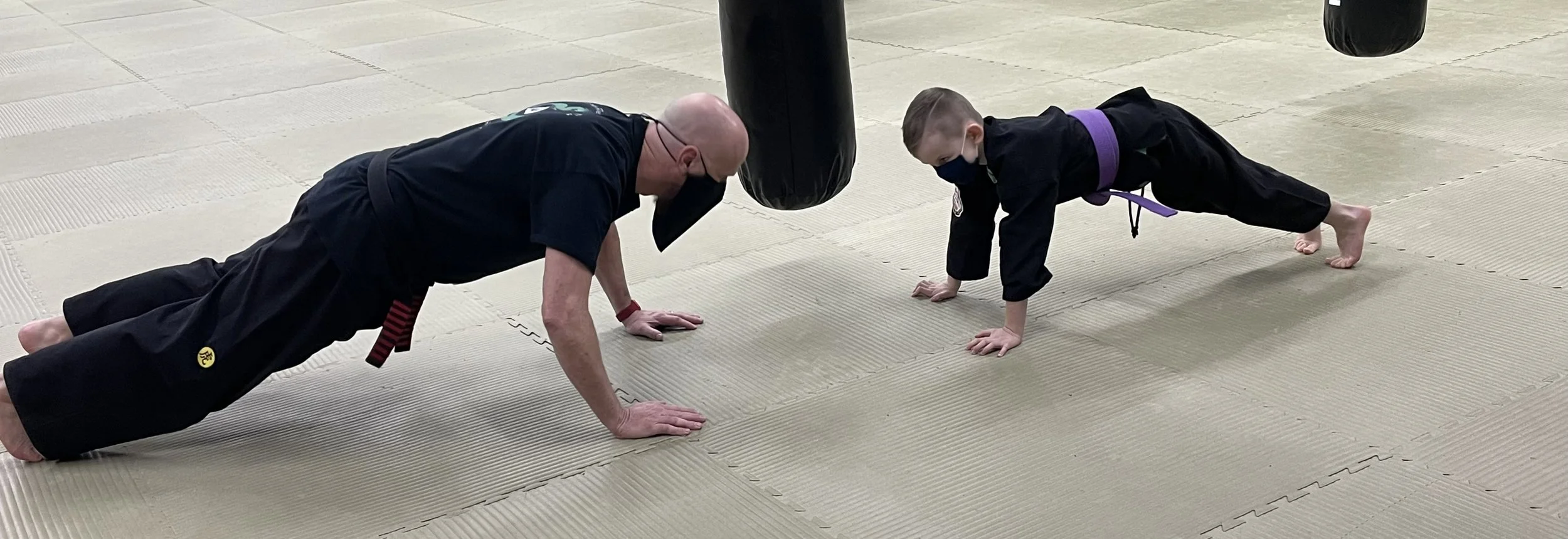Notes for Curricular Goals Meeting
With our meeting looming this Sunday, I thought I would share some of my thought process with you all to help save some time in the meeting.
A black belt must be of strong moral character first and foremost and, for the most part, I am satisfied with this aspect of the vast majority of our candidates. So it is the physical shortcomings that continue to be my greatest concern.
For me it is always the basics that I am most frustrated about in our black belt gradings. Stances, kicks, forms, etc. I rarely am super satisfied with our candidates performance of these basic techniques. We have tried several strategies to improve our outcomes on these shortcomings but, to date, nothing has had a satisfying impact on improving these techniques.
We have tried simplifying our syllabus so that the students would have more time to practice the basics. This is a solid strategy but it also is dependant upon the student actually practicing on their own. So far - failure.
We have tried moving to a rotating syllabus/curriculum to ensure proper exposure to the techniques happens, along with regular review. This has seen an improvement of overall knowledge in our candidates but only a slight corresponding improvement in skill followed. Probably due to a lack of meaningful practice on the student part.
We have removed student access to the syllabus with the goal of getting them to work more on skill and less on knowledge. This strategy has definitely worked as we are seeing a refreshing and effaceable approach by our Level 1 students who have never seen the syllabus. It will be a while before this change translates to better black belts because the next few years are going to be candidates who have copies of the old syllabus at their disposal.
So moving forwards I have a couple of ideas to share, along with where I would like to see a shift in focus.
A rotating curriculum/syllabus is definitely something we have to pursue. It organizes our classes better and it ensures that all the students, no matter what program they are enrolled in, are learning the same things at the same time. This will make for an easier transition when they change classes.
There is a certain amount of synergy between different syllabus stripes that will allow us to exploit for a more efficient rotation schedule. I see a strong relationship between:
White (6 harmonies) and Yellow (Vocabulary of motion),
Blue (Traditional Tenets) and Red (Keystone Principles),
Black (Wuxin) and Orange (Dynamic Control).
I am committed to double down on the traditional aspect of our curriculum/syllabus. It is the adherence to traditional values and techniques that makes our school unique and strong. With that in mind, I feel very strongly about expanding our Lion Dance syllabus to improve our students’ lion dance skills and to bring us closer in harmony with the international lion dance community.
In the past we have shied away from doing too much lion dancing in class because that takes away from the core basics that the grading board is so concerned about. However if we recognize the close correlation between lion dancing and our Keystone Principle techniques, then shifting our focus to more lion dancing should actually improve our students’ core basic techniques.
I hope these notes help generate ideas and engagement within our group. See you all Sunday.
Goals for Curricular and Syllabus Development
As per the normal state of things, we are currently working on enhancing and revising both the syllabus and curriculum. This article is meant to serve as a quick reference and documentation of our intent.
For reference;
Curriculum- refers to the overarching concepts and ideals that we are striving to develop in our students.
Syllabus- refers to the list of tools available to the instructors in their endeavours to develop the Curriculum in the students.
Our general plan of attack is as follows;
Give feedback to Sifu Brinker on the current Curriculum, what we see missing or what would benefit from more clairity.
Curriculum rewrite, better defining our overall concepts and goals as a school.
Define what we as the grading board want to see in the “end product”; qualities we want to see further developed in the candidates or qualities that we see in our candidates that need to be recognized and retained.
Development of Progressive Requirements that directly support what we want to see in future candidates.
Syllabus rewrite, to best support the goals and objectives that have been defined in the process.
Our meeting, scheduled on Sunday, July 16 @ 8pm is meant to be a step in this process, so we can begin to solidify the direction the Syllabus needs to take in order to best serve and support the Curriculum. If we can definitively identify what qualities we value and desire in the future candidates, then we can begin to find the gaps in our current approach to the Syllabus and in general.


